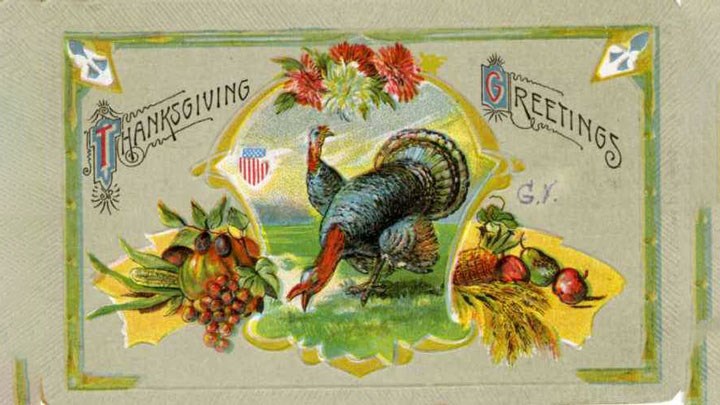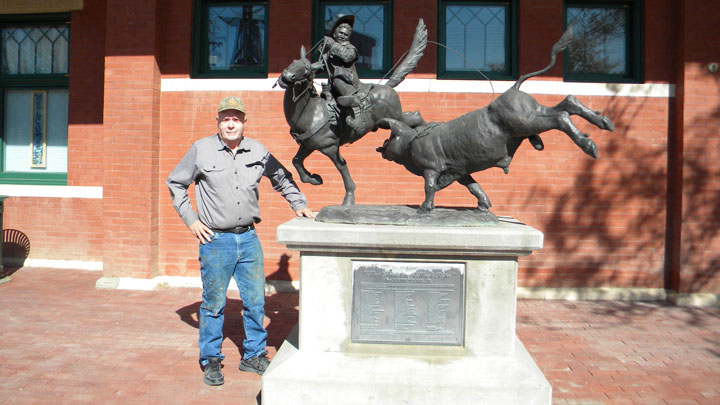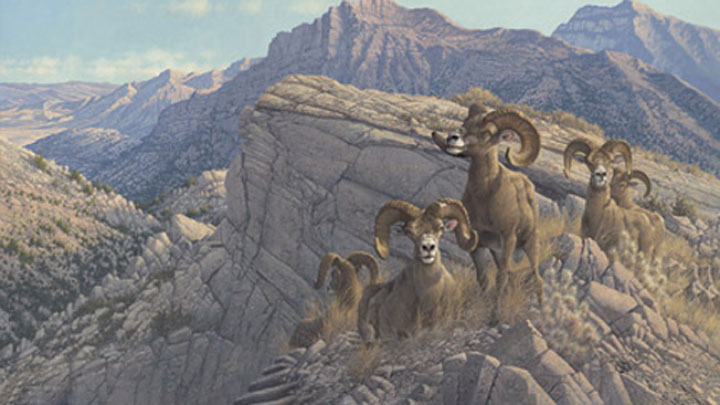
by Dan Simmons - Thursday, November 24, 2022

While sitting at my desk, having just returned from a November Colorado elk hunt, I was eating a plate of elk track stew. Yes, the elk won this time with the help of a big storm (70 mph winds, flooding rains and snow). It was, however, a great hunt, even though it didn’t help fill the freezer. I was planning on an elk roast for Thanksgiving, but the turkey will be great again. As I sat there reflecting on the holiday, I thought about all the great wildlife artists I have known and hunted with through the years.
The goal of every hunt is to bring home the harvest; the reward for the hunt is being away from the crowds, the busy lives and distractions and visiting with friends old and new. My recent elk hunt was great. I shared the campfire with my friend, artist and sculptor Justin Young. As the stories flew of great hunts both locally and around the world, we talked about our love of hunting and relived many shared experiences.
However, Justin Young is not only a world-renowned sculptor and artist, he has also studied wildlife in Africa, Asia, Australia and New Zealand. He has a lifetime of hunting in his native North America from Canada to Mexico, but his heart is at his home in Lamar, Colo., and the West. During all of his hunting expeditions, he always took time to accurately measure the animals he took, including the length of their legs, ears, body, horns and antlers, all so that he could recreate their precise dimensions in his paintings and sculptures—a true scientist and artist.
Young’s scientific and art background began at an early age as he came from a family of artists. When he was 9 years old, his grandmother prepared an area in her studio for him with art materials and said, “This is where it begins.” During this time, his uncles and brother began teaching him the finer points of hunting ducks and rabbits. The stage was being set.
I was reminded that many great artists, sculptors, painters and writers share a true passion for conservation, hunting, fishing and exploration. Their experiences end up in bronze, on canvas or paper. All are storytellers. Of course, hunter-writers are well represented by Hemingway, Ruark, Capstick and many others.
While in camp, Justin told of an experience he had while participating in a cattle roundup with some of his rancher-hunter friends. The topic of roping a bull came up and one of the cowboys told of how he roped a bull that then turned on him, going under his horse, gorging it and throwing the rider and horse in the air. All survived, but a lesson was learned the hard way. A second cowboy chimed in with the story of roping a bull, wrapping the rope on a trailer and dallying-up; the bull then ran, pulling him hard against the trailer. He survived, but he, too, learned a lesson. A third told of losing a thumb after taking a double wrap on his hand. He had the proof on his right hand. All the “old timers” had a story and learned the lesson.
Young’s “Short Fuse on a Slack Rope,” a three-quarter life-size bronze sculpture, is a detailed depiction of a rider and a roped bull that has gored the rider’s horse during the annual roundup, stands in front of the historic Train Depot and Colorado Welcome Center in Lamar, Colo., a heritage site. The rider surely knew that you never rope a wild bull, but several of Young’s friends have tried this experience. The lesson learned is: You never control a wild bull or control other natural phenomena. In Young’s words, “It’s a life’s lesson on surviving the West.” This piece is a monument to that belief.

Another of my favorite hunting artists is wildlife and big-game artist Michael Sieve. While on a scouting trip with Sieve in an area where I successfully hunted a desert bighorn sheep, he envisioned something beyond my hunting story, which resulted in his painting “Desert Kings.” He was able to visualize and bring this adventure to life because of his decades of hunting experiences in his native Minnesota as well as through his adventures in Africa, India and South America.

Sieve creates award-winning paintings not only because he has seen much of these countries, but because he has become part of them and their wildlife, as our forefathers also became one with nature and shared experiences of America’s beauty and dangers. His painting “Ivory Hunter” is a fine example of how he could imagine and capture the feel of danger and depict the life of an early ivory hunter of the late 1800s. Both of these pieces are featured with background stories in his new book An Artist’s Life.
Bottom Line: We need our great wildlife artists like Young, Sieve, Hemingway and many others who can share their insights through their works. I hope you can search out some of these works and become inspired as I and many others have. These books and wildlife art also make great holiday gifts.
If you have a story or a comment, please e-mail me [email protected] or visit my Sportsman’s Quest website. In the meantime, I’ll leave you with an elk recipe from the legendary Roy Weatherby taken from my Ol' Ern Cookbook by Ernie Simmons, published with permission. If I had harvested an elk, this is the meal I would have made for friends. It is one of my favorites—and it works with beef too.
The Author’s All-Time Favorite Easy Elk Recipe
Ingredients
2 tbsp. soy sauce
2 tbsp. flour
2 lbs. elk or sheep stew meat
4 carrots
2 onions
1 cup celery, thinly sliced
1 clove garlic, minced
1 tsp. pepper
1 tsp. marjoram
1 tsp. thyme
1 cup burgundy or any dry red wine
1 cup sliced mushrooms
Directions
E-mail your comments/questions about this site to:
[email protected]
Proudly supported by The NRA Foundation and Friends of NRA fundraising.
